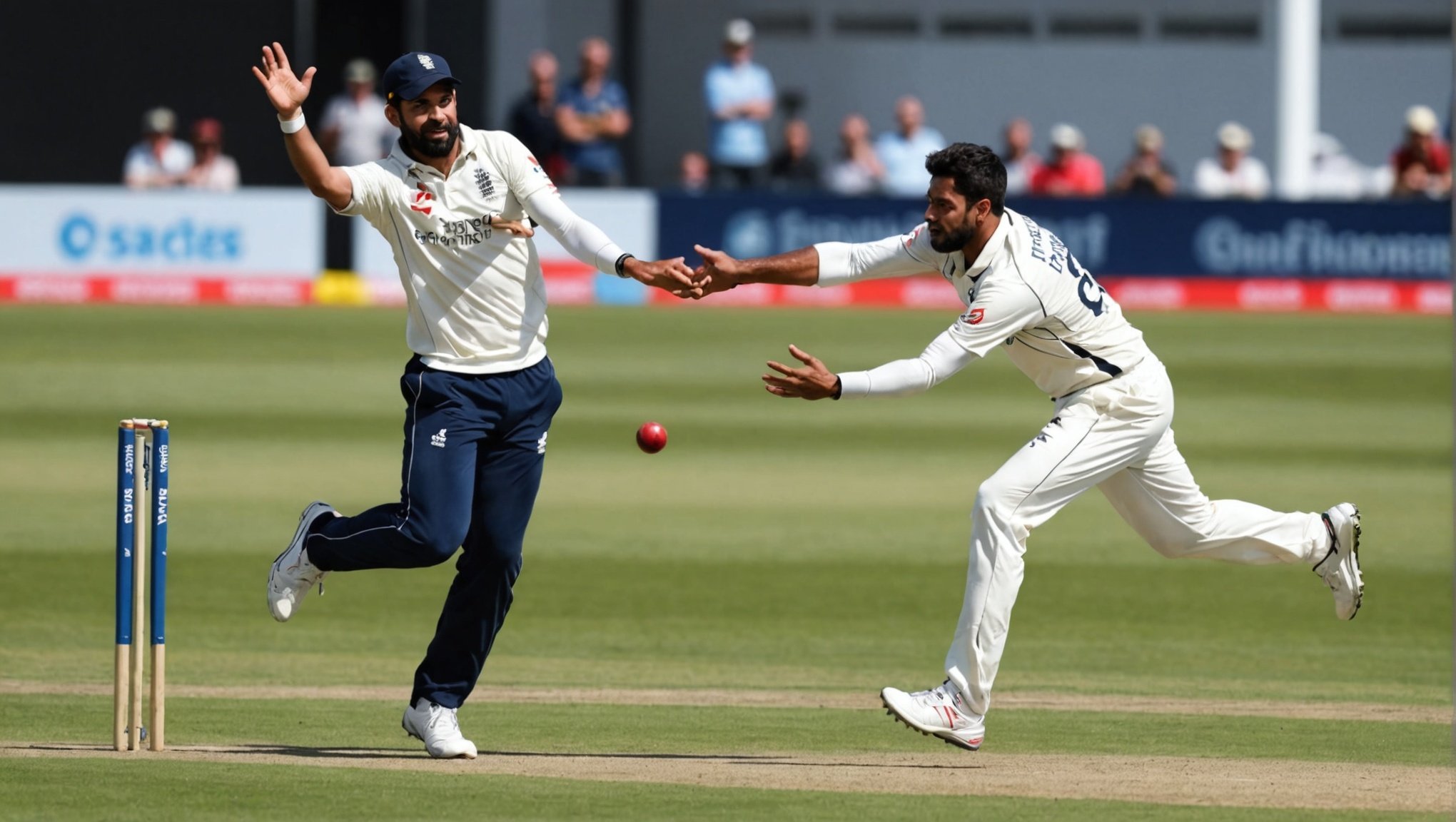Unlocking Peak Fielding Agility: Strategies for Professional Cricketers to Elevate Their Game
The Importance of Fielding Agility in Cricket
Fielding agility is a crucial component of a cricketer’s arsenal, often making the difference between a mediocre and an exceptional player. In the fast-paced world of cricket, the ability to move swiftly, change direction quickly, and react to the ball with precision can be the deciding factor in winning matches. Here, we delve into the strategies and methods that professional cricketers can employ to enhance their fielding agility.
Physical Conditioning: The Foundation of Fielding Agility
Physical conditioning is the bedrock upon which fielding agility is built. The Cricket Matters Coaching Method, for instance, emphasizes the importance of physical conditioning as one of its three essential pillars, alongside mental resilience and technical and tactical mastery[1].
Topic to read : Unlocking Peak Performance: Strategies for Biathletes to Boost Skiing Efficiency with Focused Strength Training
Strength and Power
Building strength is vital for generating the power needed to move quickly and explosively around the field. This includes focusing on exercises that enhance lower body strength, such as squats, lunges, and deadlifts. Here’s a detailed list of strength training exercises that can benefit cricketers:
- Squats: Works multiple muscle groups including the quadriceps, hamstrings, and glutes.
- Lunges: Improves balance and stability while strengthening the legs.
- Deadlifts: Enhances overall lower body strength and power.
- Leg Press: Targets the quadriceps, hamstrings, and glutes.
- Calf Raises: Strengthens the calf muscles, essential for quick movements.
Agility and Speed
Agility drills are designed to improve a player’s ability to change direction quickly and move with precision. Here are some agility training exercises:
In the same genre : Maximizing Performance: Essential Tips for Wheelchair Basketball Athletes to Fine-Tune Their Chair Setup
- Shuttle Runs: Involves rapid changes of direction, mimicking the movements on the cricket field.
- Cone Drills: Players weave through cones, improving their ability to change direction swiftly.
- Ladder Drills: Enhances foot speed and agility through various ladder exercises.
- Plyometric Training: Includes jump squats and box jumps to improve explosive power.
Mental Resilience: The Mental Edge in Fielding
Mental resilience is another critical aspect of the Cricket Matters Coaching Method. It helps players maintain focus, confidence, and composure under pressure, which is essential for making quick and accurate decisions on the field.
Managing Pressure
Players need a structured mental framework to handle the pressure of high-stakes matches. Here are some strategies to build mental resilience:
- Visualization Techniques: Players visualize themselves performing well in different scenarios, helping to build confidence and mental toughness.
- Positive Self-Talk: Encourages players to maintain a positive mindset, even in the face of adversity.
- Breathing Exercises: Helps players stay calm and focused under pressure.
Technical and Tactical Mastery: The Art of Fielding
Technical and tactical mastery involves refining the skills specific to fielding, such as catching, throwing, and positioning. Here’s how cricketers can elevate their technical game:
Tactical Intelligence
Understanding the game tactically is crucial for effective fielding. This includes:
- Reading the Game: Players need to anticipate where the ball might go based on the batsman’s stroke and the bowler’s delivery.
- Strategic Positioning: Knowing where to position oneself on the field to maximize the chances of taking catches or effecting run-outs.
- Communication: Good communication among fielders is key to coordinating efforts and making split-second decisions.
Practical Training Sessions
Net Sessions
Net sessions are invaluable for practicing fielding skills in a controlled environment. Here’s how to make the most out of a net session:
- Focused Drills: Conduct specific drills such as catching practice, throwing drills, and agility exercises within the nets.
- Simulation Scenarios: Simulate game scenarios to practice decision-making and reaction times.
On-Field Training
On-field training sessions should be designed to mimic real-game situations as closely as possible. Here’s a sample on-field training plan:
| Training Component | Description | Duration |
|---|---|---|
| Warm-Up | Light jogging, stretching, and dynamic movements | 15 minutes |
| Agility Drills | Shuttle runs, cone drills, ladder drills | 20 minutes |
| Fielding Drills | Catching practice, throwing drills | 25 minutes |
| Tactical Scenarios | Simulated game scenarios | 30 minutes |
| Cool-Down | Static stretches | 10 minutes |
Insights from Experts
Patrick Farhart on Mental Resilience
In an episode of the Cricket Library podcast, Patrick Farhart emphasized the importance of mental resilience in cricket: “Mental resilience is what separates the good players from the great ones. It’s about staying focused and composed under pressure, and that’s something that can be developed through the right training and mindset”.
Xara Jetly on Physical Conditioning
Xara Jetly, a renowned cricket coach, highlights the significance of physical conditioning: “A strong physical foundation is essential for any cricketer. It’s not just about strength; it’s about agility, endurance, and the ability to perform at a high level consistently throughout the game”.
Real-Life Examples and Anecdotes
Australian Cricket Team’s Fielding Transformation
The Australian cricket team, under the coaching of Shane Jurgensen, underwent a significant transformation in their fielding abilities. By focusing on physical conditioning, mental resilience, and technical mastery, they became one of the best fielding teams in the world. This transformation was evident in their improved catching rates and the number of run-outs they effected during matches.
Actionable Advice for Cricketers
Create a Balanced Training Plan
Ensure your training plan includes a balance of physical conditioning, mental resilience training, and technical skill development. Here’s a sample weekly plan:
- Monday: Strength training and agility drills
- Tuesday: Mental resilience training and visualization techniques
- Wednesday: Rest day
- Thursday: Technical skill practice (catching, throwing)
- Friday: Tactical scenarios and on-field training
- Saturday: Net sessions and focused drills
- Sunday: Cool-down and recovery
Seek Feedback and Adjust
Regularly seek feedback from coaches and teammates. Analyze your performance and adjust your training plan accordingly. For example, if you find you’re struggling with catching high balls, focus more on overhead catching drills.
Unlocking peak fielding agility is a multifaceted process that requires a holistic approach. By focusing on physical conditioning, mental resilience, and technical and tactical mastery, cricketers can significantly elevate their game. Remember, it’s not just about the physical aspects; mental toughness and tactical intelligence are equally crucial. With the right training, mindset, and practice, any cricketer can become a top-notch fielder.
In the words of Matt Ellis, a cricket coach, “Fielding is not just about catching and throwing; it’s about being in the right place at the right time. It’s a combination of physical ability, mental focus, and tactical awareness. When you get all these elements right, you become an unstoppable force on the field”.
By incorporating these strategies into your training regimen, you’ll be well on your way to becoming a fielding specialist, capable of making a significant impact in every game you play.






